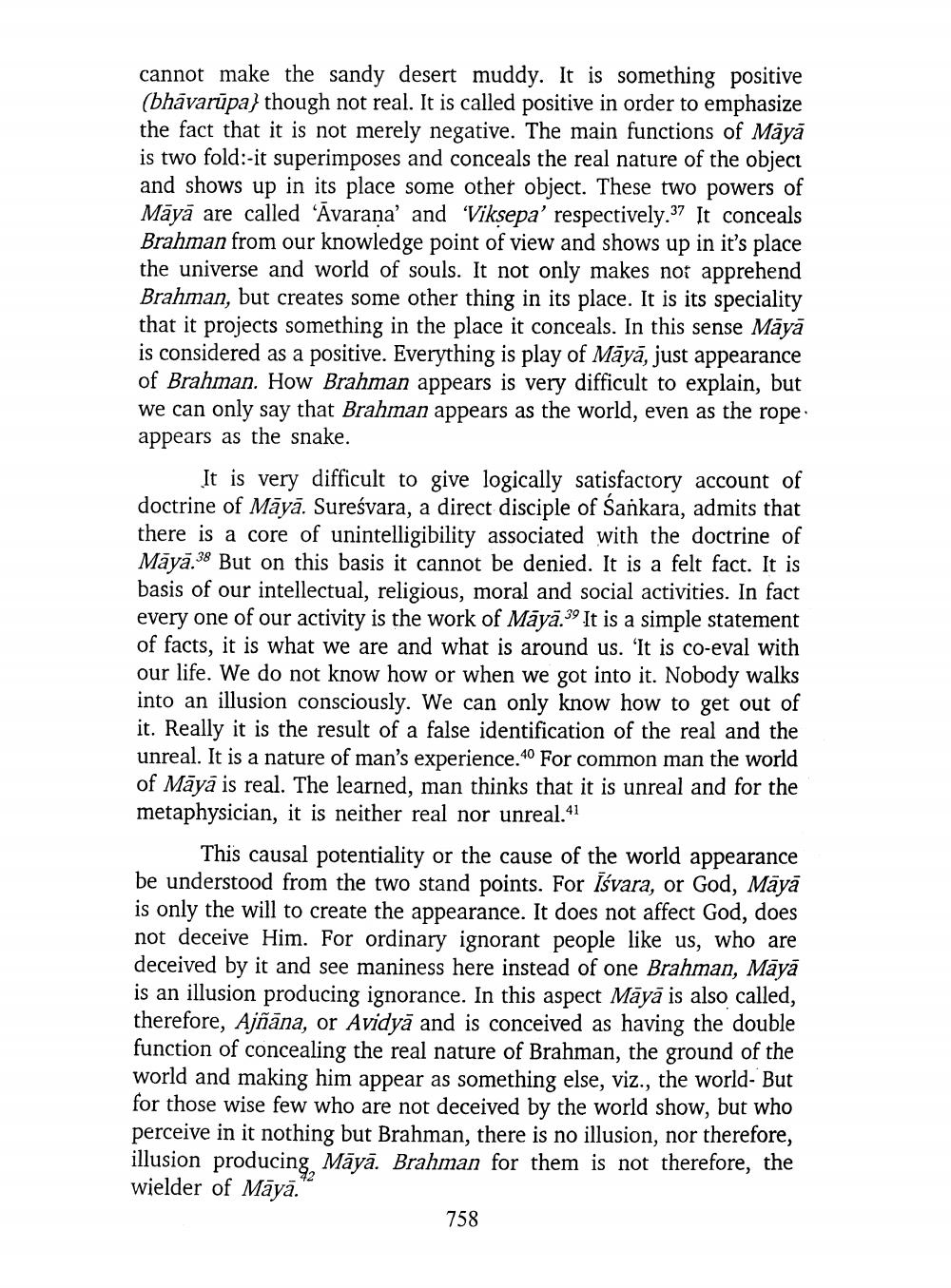________________
cannot make the sandy desert muddy. It is something positive (bhāvarūpa} though not real. It is called positive in order to emphasize the fact that it is not merely negative. The main functions of Māyā is two fold:-it superimposes and conceals the real nature of the object and shows up in its place some other object. These two powers of Māyā are called 'Āvarana' and 'Viksepa’ respectively.37 It conceals Brahman from our knowledge point of view and shows up in it's place the universe and world of souls. It not only makes not apprehend Brahman, but creates some other thing in its place. It is its speciality that it projects something in the place it conceals. In this sense Māyā is considered as a positive. Everything is play of Māyā, just appearance of Brahman. How Brahman appears is very difficult to explain, but we can only say that Brahman appears as the world, even as the rope appears as the snake.
It is very difficult to give logically satisfactory account of doctrine of Māyā. Sureśvara, a direct disciple of Sankara, admits that there is a core of unintelligibility associated with the doctrine of Māyā.38 But on this basis it cannot be denied. It is a felt fact. It is basis of our intellectual, religious, moral and social activities. In fact every one of our activity is the work of Maya.39 It is a simple statement of facts, it is what we are and what is around us. 'It is co-eval with our life. We do not know how or when we got into it. Nobody walks into an illusion consciously. We can only know how to get out of it. Really it is the result of a false identification of the real and the unreal. It is a nature of man's experience.40 For common man the world of Māyā is real. The learned, man thinks that it is unreal and for the metaphysician, it is neither real nor unreal.41
This causal potentiality or the cause of the world appearance be understood from the two stand points. For īśvara, or God, Māyā is only the will to create the appearance. It does not affect God, does not deceive Him. For ordinary ignorant people like us, who are deceived by it and see maniness here instead of one Brahman, Māyā is an illusion producing ignorance. In this aspect Māyā is also called, therefore, Ajñāna, or Avidyā and is conceived as having the double function of concealing the real nature of Brahman, the ground of the world and making him appear as something else, viz., the world. But for those wise few who are not deceived by the world show, but who perceive in it nothing but Brahman, there is no illusion, nor therefore, illusion producing Māyā. Brahman for them is not therefore, the wielder of Māyā.
758




